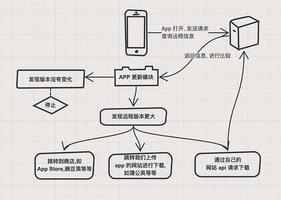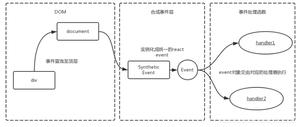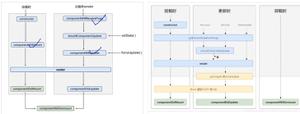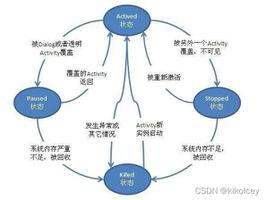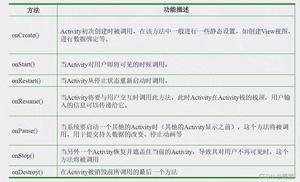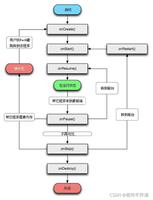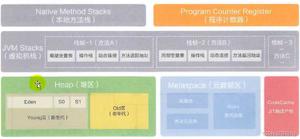React组件生命周期小结

下面所写的,只适合前端的React。(React也支持后端渲染,而且和前端有点小区别,不过我没用过。)
相关函数
简单地说,React Component通过其定义的几个函数来控制组件在生命周期的各个阶段的动作。
在ES6中,一个React组件是用一个class来表示的(具体可以参考官方文档),如下:
// 定义一个TodoList的React组件,通过继承React.Component来实现class TodoList extends React.Component {
...
}
这几个生命周期相关的函数有:
constructor(props, context)构造函数,在创建组件的时候调用一次。
void componentWillMount()在组件挂载之前调用一次。如果在这个函数里面调用setState,本次的render函数可以看到更新后的state,并且只渲染一次。
void componentDidMount()在组件挂载之后调用一次。这个时候,子主键也都挂载好了,可以在这里使用refs。
void componentWillReceiveProps(nextProps)props是父组件传递给子组件的。父组件发生render的时候子组件就会调用componentWillReceiveProps(不管props有没有更新,也不管父子组件之间有没有数据交换)。
bool shouldComponentUpdate(nextProps, nextState)组件挂载之后,每次调用setState后都会调用shouldComponentUpdate判断是否需要重新渲染组件。默认返回true,需要重新render。在比较复杂的应用里,有一些数据的改变并不影响界面展示,可以在这里做判断,优化渲染效率。
void componentWillUpdate(nextProps, nextState)shouldComponentUpdate返回true或者调用forceUpdate之后,componentWillUpdate会被调用。
void componentDidUpdate()除了首次render之后调用componentDidMount,其它render结束之后都是调用componentDidUpdate。
componentWillMount、componentDidMount和componentWillUpdate、componentDidUpdate可以对应起来。区别在于,前者只有在挂载的时候会被调用;而后者在以后的每次更新渲染之后都会被调用。
ReactElement render()render是一个React组件所必不可少的核心函数(上面的其它函数都不是必须的)。记住,不要在render里面修改state。
void componentWillUnmount()组件被卸载的时候调用。一般在componentDidMount里面注册的事件需要在这里删除。
更新方式
在react中,触发render的有4条路径。
以下假设shouldComponentUpdate都是按照默认返回true的方式。
- 首次渲染Initial Render
- 调用this.setState (并不是一次setState会触发一次render,React可能会合并操作,再一次性进行render)
- 父组件发生更新(一般就是props发生改变,但是就算props没有改变或者父子组件之间没有数据交换也会触发render)
- 调用this.forceUpdate
下面是我对React组件四条更新路径地总结:
React组件更新路径.png
注意,如果在shouldComponentUpdate里面返回false可以提前退出更新路径。
一个React组件生命周期的测试例子
代码比较简单,没有逻辑,只是在每个相关函数里面alert一下。<h1>点击链接来试试这个例子。</h1>
源码:
class LifeCycle extends React.Component { constructor(props) {
super(props);
alert("Initial render");
alert("constructor");
this.state = {str: "hello"};
}
componentWillMount() {
alert("componentWillMount");
}
componentDidMount() {
alert("componentDidMount");
}
componentWillReceiveProps(nextProps) {
alert("componentWillReceiveProps");
}
shouldComponentUpdate() {
alert("shouldComponentUpdate");
return true; // 记得要返回true
}
componentWillUpdate() {
alert("componentWillUpdate");
}
componentDidUpdate() {
alert("componentDidUpdate");
}
componentWillUnmount() {
alert("componentWillUnmount");
}
setTheState() {
let s = "hello";
if (this.state.str === s) {
s = "HELLO";
}
this.setState({
str: s
});
}
forceItUpdate() {
this.forceUpdate();
}
render() {
alert("render");
return(
<div>
<span>{"Props:"}<h2>{parseInt(this.props.num)}</h2></span>
<br />
<span>{"State:"}<h2>{this.state.str}</h2></span>
</div>
);
}
}
class Container extends React.Component {
constructor(props) {
super(props);
this.state = {
num: Math.random() * 100
};
}
propsChange() {
this.setState({
num: Math.random() * 100
});
}
setLifeCycleState() {
this.refs.rLifeCycle.setTheState();
}
forceLifeCycleUpdate() {
this.refs.rLifeCycle.forceItUpdate();
}
unmountLifeCycle() {
// 这里卸载父组件也会导致卸载子组件
React.unmountComponentAtNode(document.getElementById("container"));
}
parentForceUpdate() {
this.forceUpdate();
}
render() {
return (
<div>
<a href="javascript:;" className="weui_btn weui_btn_primary" onClick={this.propsChange.bind(this)}>propsChange</a>
<a href="javascript:;" className="weui_btn weui_btn_primary" onClick={this.setLifeCycleState.bind(this)}>setState</a>
<a href="javascript:;" className="weui_btn weui_btn_primary" onClick={this.forceLifeCycleUpdate.bind(this)}>forceUpdate</a>
<a href="javascript:;" className="weui_btn weui_btn_primary" onClick={this.unmountLifeCycle.bind(this)}>unmount</a>
<a href="javascript:;" className="weui_btn weui_btn_primary" onClick={this.parentForceUpdate.bind(this)}>parentForceUpdateWithoutChange</a>
<LifeCycle ref="rLifeCycle" num={this.state.num}></LifeCycle>
</div>
);
}
}
ReactDom.render(
<Container></Container>,
document.getElementById('container')
);
以上是 React组件生命周期小结 的全部内容, 来源链接: utcz.com/z/384124.html

